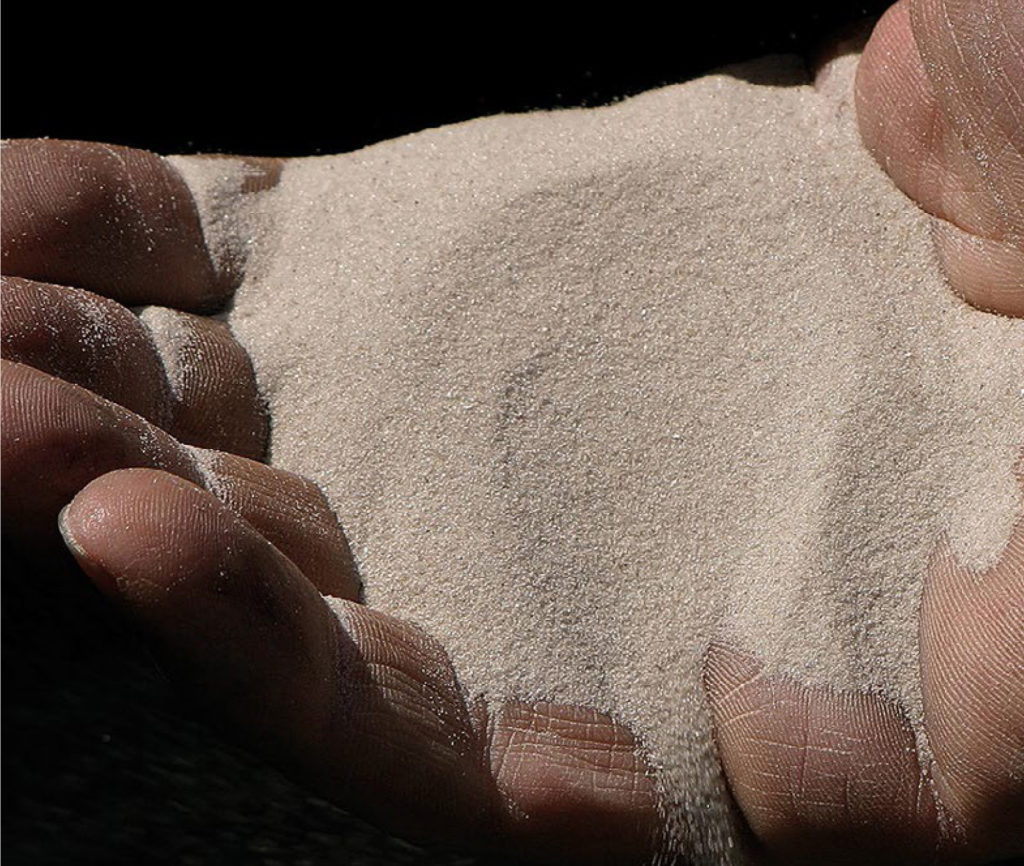
Crystalline Silica

Silica is a mineral made up of silicon and oxygen, two of the most common elements on the planet. It comes in several forms, although by far the most common is crystalline silica. Crystalline silica is so abundant that it makes up over 12% of the earth’s crust, making it the second-most common mineral on the planet.
Crystalline silica comes in the forms of quartz, cristobalite and tridymite. Quartz is the most common of these, which transforms into cristobalite when heated at high temperatures (over 1450 degrees centigrade).
Crystalline silica is an extremely useful mineral, and products containing it have been used for thousands of years to build and make things. Crystalline silica is present in thousands of different raw materials, including almost all types of material extracted from the earth’s crust. It is present in almost all materials that are quarried, including sand, clays, gravel and metallic ores. It is hard, chemically inert, and has a high melting point, qualities which make it a valuable raw material for many industrial and manufacturing processes.
A Key Ingredient in Products We Use Every Day
Crystalline silica is so common that products containing it are used in a vast array of industries, including glass, foundries, construction, mineral wool, ceramics, chemicals, horticulture, and even sports and leisure. It is used as a filler for paints, plastics, and rubber, whilst silica sand is used in water filtration and agriculture.
Crystalline silica is irreplaceable in a series of high-tech applications, for example precision casting, fibreoptic cables, and the raw materials for computer chips. It is also used in the metallurgical industry, oil and gas extraction, and recycling.
That means that crystalline silica is a key component in the manufacture of almost everything we use on a daily basis. It is present in our computers and phones, cars and buses, roads and railways, and throughout our homes. It is even key to the infrastructure of the internet, renewable energy and telecommunications. It can truly be described as one of the building
blocks of modern life.
Crystalline silica (silica) is found in sand, stone, concrete and mortar. It is also used as the primary filler for engineered (also known as artificial or reconstituted stone, which has become very popular for the fabrication of kitchen and bathroom benchtops) When workers cut, crush, drill, polish, saw or grind products that contain silica, tiny dust particles are generated that are small enough to lodge deep in the lungs and cause disease, including silicosis.
Different types of rock and rock products can contain different amounts of silica. Examples include:
| Brick: | 5-15% |
| Ceramic tiles: | 5-45% |
| Demolition dust: | 3 – 4% |
| Shale: | 22% |
| Clay bricks: | 15 – 27% |
| Aggregates in concrete: | 30% |
| Fibre cement bricks: | 10 – 30% |
| Granite: | 25-40% |
| Natural sandstone | 67% |
| Engineered, artificial or reconstituted stone: | 90% |
(The above percentages represent typical concentrations)
If you’re not sure if a product contains crystalline silica, check the safety data sheet (SDS).
The following images show where crystalline silica is used in manufactured products both in and around your home and in everyday industries.

